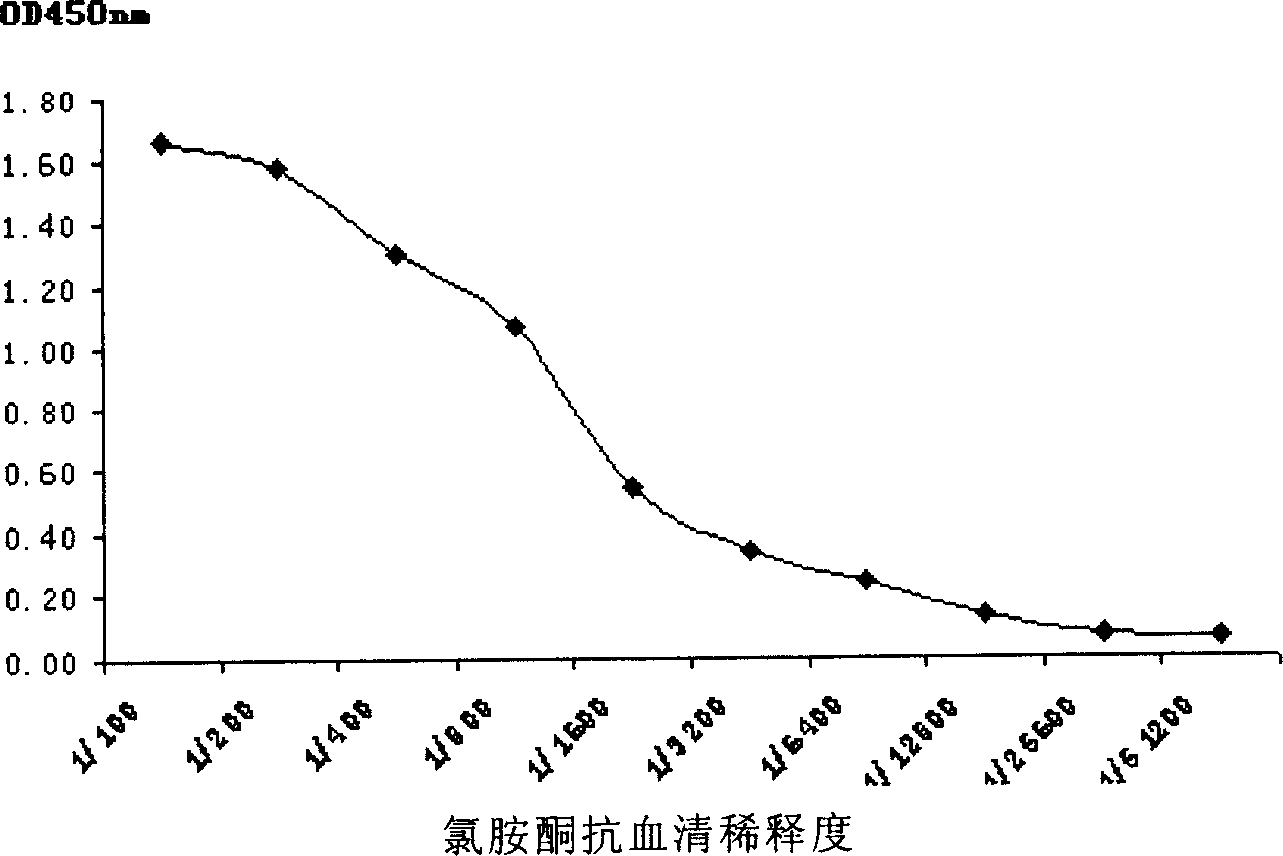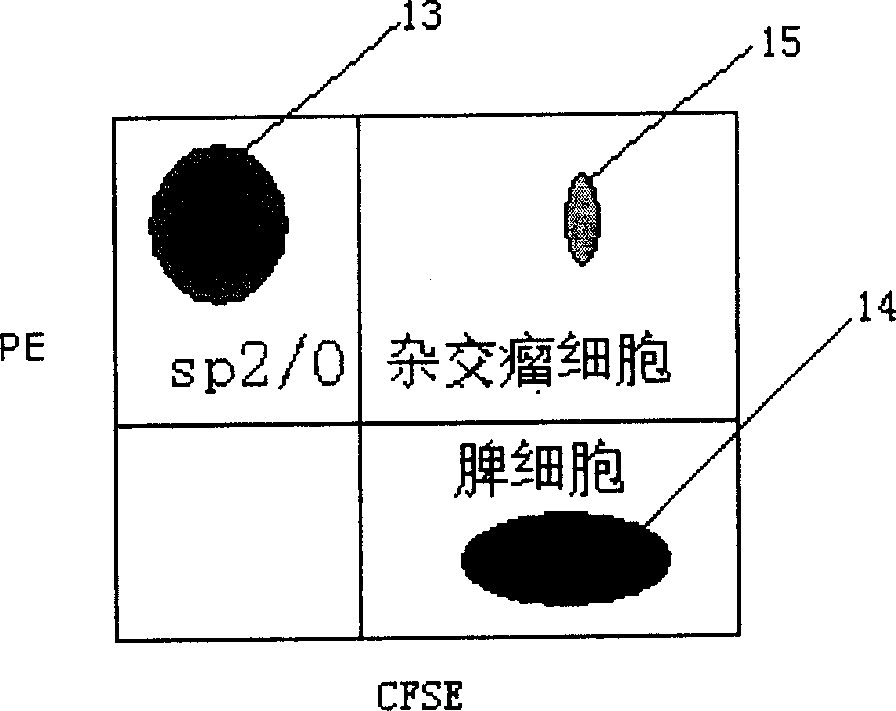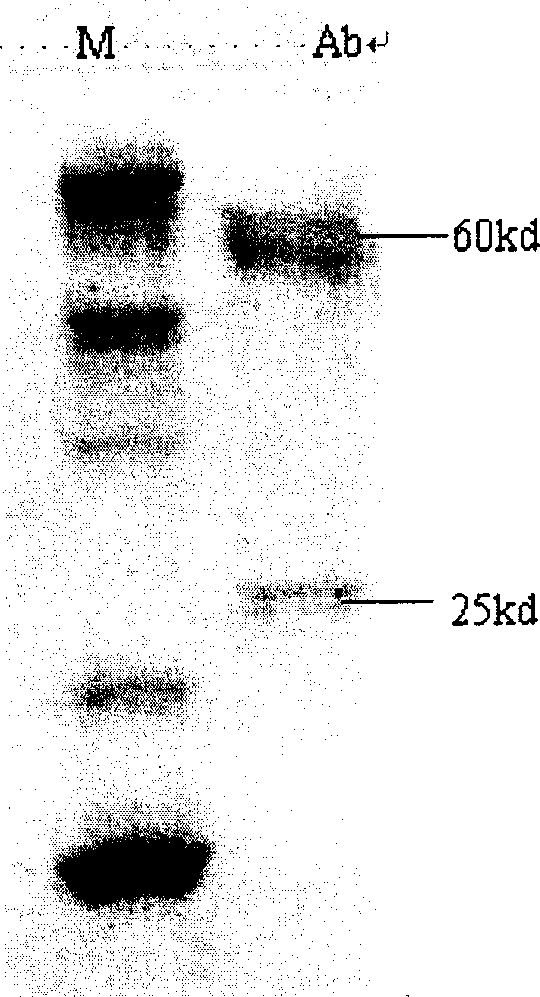Monoclonal antibody for ketamine detection and immune detection board
A ketamine and detection plate technology, applied in the field of enzyme-linked immunoassay detection of ketamine, can solve the problems of incompetent reaction of complete antigen, low coupling efficiency of hapten and carrier protein, difficult preparation and the like
- Summary
- Abstract
- Description
- Claims
- Application Information
AI Technical Summary
Problems solved by technology
Method used
Image
Examples
preparation example Construction
[0090] The preparation method of the complete antigen of the present invention is as follows:
[0091]
[0092] Firstly, ketamine is activated to obtain its derivative: p-amino-ketamine, and then p-amino-ketamine is connected to a suitable protein carrier (eg, KLH, BSA) to obtain a complete antigen. Wherein X is a protein carrier, preferably hemocyanin (KLH) or bovine serum albumin (BSA) in the present invention; The part that is covalently cross-linked with X carrier is the derivative p-amino-ketamine (p-NH 2 -Ketamine).
[0093] The nitration and reduction reactions described therein can be carried out by any method known to those skilled in the art under any suitable conditions. For example, the nitration reaction of the present invention can be carried out under the following conditions: the reaction temperature is -10-10°C, preferably -5-0°C; the reaction time is 1-24 hours, preferably 2-12 hours, more preferably 2-6 hours The reduction reaction conditions of the pre...
Embodiment 1
[0148] Embodiment 1 Activation of ketamine and preparation of hapten
[0149] Add 0.52g of ketamine raw material and 10ml of 98wt% concentrated sulfuric acid in the reaction flask, stir to dissolve it, place it in an ice-salt bath and cool to -5°C, add 0.25ml of 70wt% nitric acid and A mixed acid solution consisting of 0.75ml of 98wt% sulfuric acid. After the addition, react at 0°C for 2 hours, then pour it into 10g of crushed ice, wait for the crushed ice to melt, and then react at 0°C for half an hour, when a white solid precipitates, filter it with suction to obtain a white solid 0.62g (crude product, directly used in the next reaction without purification). Reaction yield: 53%. The reaction product was analyzed by MNR as the target object: p-nitro-N-ketamine.
[0150] Dissolve 0.5 g of the reaction product (i.e., p-nitroketamine) in 1.4 ml of water, add 0.55 ml of 38 wt % concentrated hydrochloric acid under stirring, gradually raise the temperature, and start adding 0.6...
Embodiment 2
[0152] Example 2 Preparation of Ketamine-KLH Complete Antigen
[0153] Weigh 100mg of p-amino-ketamine, dissolve it in 10ml of water under stirring, then slowly add 400mg of EDC (carbodiimide), shake while adding, adjust the pH value to 4.5 with 0.1M hydrochloric acid, at 25°C Continue to react for 10 minutes. 100 mg of hemocyanin (KLH) was dissolved in 5 ml of double-distilled water, added to the p-amino-ketamine solution, and the reaction was continued at 25° C. for 3 hours. The reaction product was dialyzed against 0.01M phosphate buffer at 4° C. to remove unreacted p-amino-ketamine and EDC, and the buffer was replaced 3 to 4 times. Obtain Ketamine-KLH Complete Antigen 120mg.
PUM
| Property | Measurement | Unit |
|---|---|---|
| Sensitivity | aaaaa | aaaaa |
Abstract
Description
Claims
Application Information
 Login to View More
Login to View More - R&D
- Intellectual Property
- Life Sciences
- Materials
- Tech Scout
- Unparalleled Data Quality
- Higher Quality Content
- 60% Fewer Hallucinations
Browse by: Latest US Patents, China's latest patents, Technical Efficacy Thesaurus, Application Domain, Technology Topic, Popular Technical Reports.
© 2025 PatSnap. All rights reserved.Legal|Privacy policy|Modern Slavery Act Transparency Statement|Sitemap|About US| Contact US: help@patsnap.com



